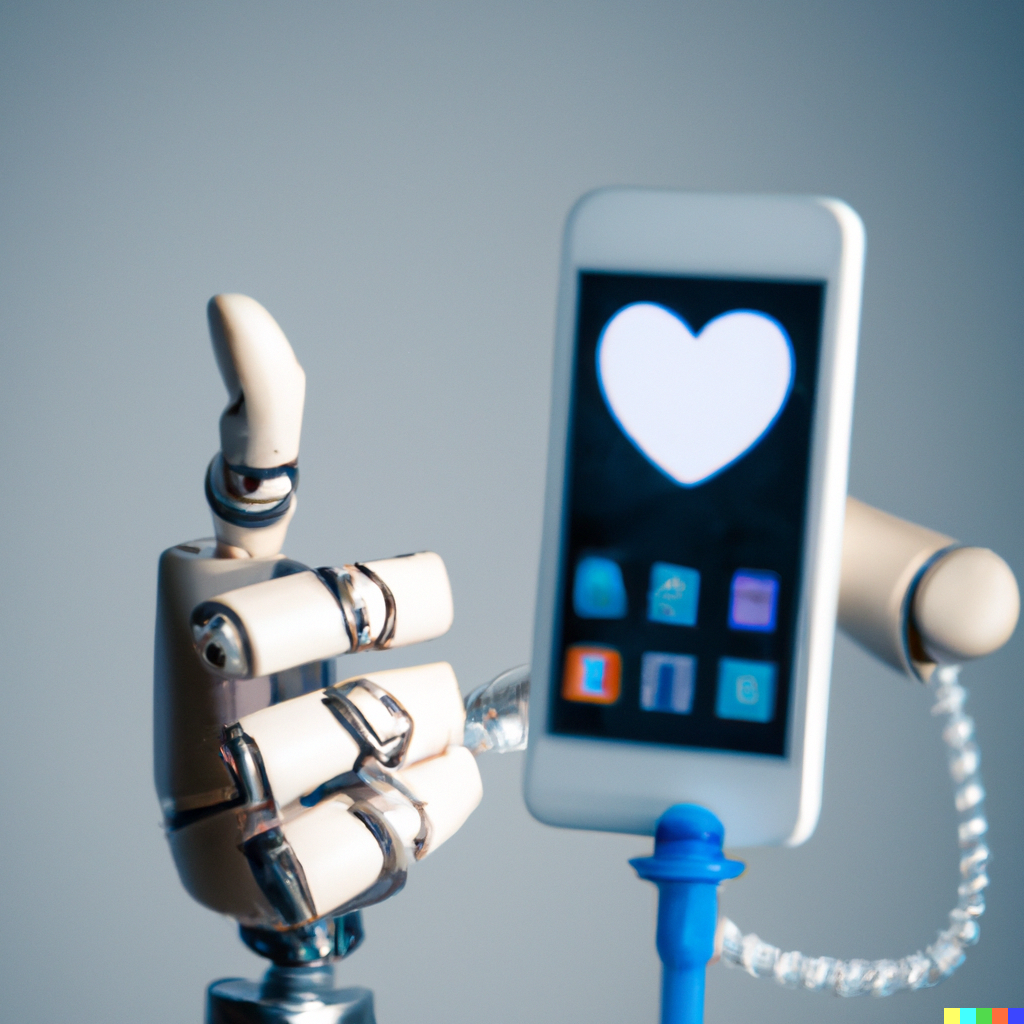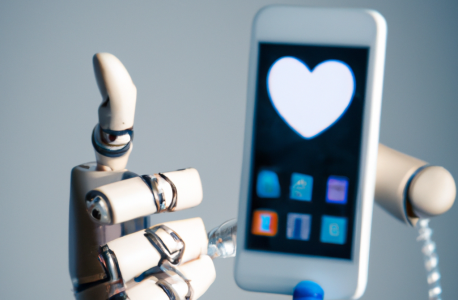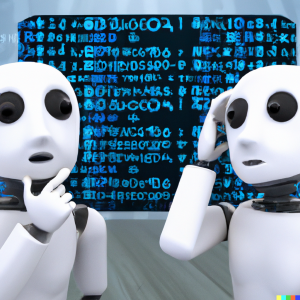
Data and AI seem to provide quick solutions to complex social problems, ease decision-making through algorithms that should ease life in many sectors, such as insurance, mobile banking, health care and education services, to mention a few. But is this really the case? This article tries to explore the complexity of nuances around the algorithm topic, diving into different areas of its use.
Let’s start by answering a fundamental question, that is what is an algorithm? It’s a set of instructions and rules that permits a computer to do certain tasks and reach a certain goal. Algorithms are widely used throughout all areas of IT and are also used as specifications for performing data processing and play a major role in automated systems. An example of algorithm is machine learning which uses multiple algorithms to predict outcomes without being explicitly programmed to do so.
Why is it important and why should we be concerned about algorithm when speaking of datafication? This is what I will explore in this article. I will talk about algorithms associated with different topics, such as social media, data justice and development.
Prior to addressing these areas, we should make a disclaimer regarding the algorithm, which can be condensed in the words of the Harvard mathematician Cathy O’Neil:
“Algorithms are opinions embedded in code”
This is a very true and effective statement to define the algorithm. Since instructions given to the algorithm are delivered on a human base, and as humans we are biased, the information given to the algorithm is to a certain form biased as well. Therefore we have to recognise that even “technology in general is never either neutral or objective; it is a mirror that reflects societal bias, unfairness, and injustice” (Birhane, 2019).
This is why Data Justice is an important concept to consider, when speaking of technology and of development. Data justice is defined as “the fairness in the way people are made visible, represented and treated as a result of their production of digital data”. (Taylor, 2017). It connects Big Data and Big Tech issues, as well as in the development sector, to how big data impacts people depending on their socio-economic position. For instance it has been proven that law-enforcement focuses on crime areas where people are poorest. This is due to the fact that data comes just from those places, reinforcing the bias and the patrols in poor neighbourhoods, while not collecting data from upper class neighbourhoods, since there are no controls there. The same happens with migrants, tracked in a more invasive way than high income travellers (Taylor, 2017). Therefore, instead of applying objective decisions, AI and ML (machine learning) work in the opposite directions and one of the ultimate effect and risk is to automate the status quo, where “the new discrimination is hidden under a veneer of computational impartiality” (USAID, 2018).
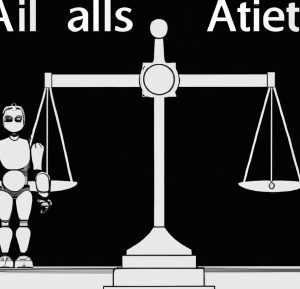
Social media, the digital divide and the ethical issue
Speaking about technology and risks connected to it, one of the barriers to access it is socio-economic conditions. This gap is represented by the terminology “digital divide” (by Norris, 2001), which started to be used in early 1990s to highlight exactly this problem: the difference between people with access to information and communication technologies (ICTs) and those who did not. (Cinnamon, 2019). Being digitally excluded leads inevitably to inequalities, theme addressed deeply as well in our blog here.
Several attempts have been made along the years to try to fill the gap generated by the digital divide. For instance Facebook implemented a platform for remote areas around the world, called Free Basics, which became in some areas a full-fledged substitute of the internet. In Myanmar the spreading of Free Basics had some collateral results and Facebook underwent a scandal, since it was accused of supporting ethnic cleansing. Even when Free Basics was withdrawn from the country, people in Myanmar continue to perceive and consider it as equal to the Internet. This is because people in the Global South have little access to the Internet or small amounts of data to use, hence the easy spreading of Facebook since “many millions of people experience platforms like Facebook as “the internet,” and data about them is consumed by foreign imperialists” (Kwet, M. 2021).
Kwet utilizes “foreign imperialists” to refer to Big Tech companies and the phenomenon of “digital colonialism”, which refers to U.S. companies targeting populations in the Global South to harvest and monetize data. Nevertheless, Digital colonialism is not only about data, but entails a variety of aspects.
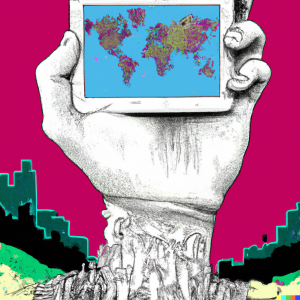
Going from, as just mentioned, the exploitation of data by Big Tech as Facebook, Amazon, Google or Apple, to pushing the use of their software in school as Microsoft did in Africa and avoiding the implementation of free software, to the exploitation of materials needed for smartphones, such as cobalt and lithium, not to mention the cheap labour of mining extractions in countries as Democratic Republic of Congo, Argentina or Bolivia or call-center workers or content moderators. Ultimately, digital colonialism expresses itself also through the partnerships with corporates in the Global South, and if we think about, except internally in China, U.S. dominates the technological world everywhere, monopolizing “the core components of the digital ecosystem”, as well expressed by Kwet:
“The upshot is, whether you are an individual or a business, if you are using a computer, American companies benefit the most. They own the digital ecosystem” (Kwet, 2021).
Many scandals have been running through social media in regards to algorithms. One of the most controversial and par excellence social media who has been criticized for that is for sure Facebook, already mentioned above for the Myanmar case. It’s not a secret by now that the Facebook algorithm is a close friend of extreme political parties’ posts and sentiments and of disinformation spreading. In fact studies show that divisive and sensationalist content are more likely to drive engagement, which is what social media like Facebook nourishes from. The case of the Philippines’ election case of this year is a well-known one, with hundreds of fake stories spreading on Facebook and Instagram prior to the elections. Another example is the Italian politician Salvini’s activity, who in a few years built a social media empire through the strategic use of the social media and thanks to what has been defined as the “algorithmic populism” (Ico Maly, 2018), being the most followed politicians on Facebook with 5 million followers. What made him reach so many people has been the strategy of spreading populist feelings and content through immigrant panic, anger and anti-pluralistic ideas, creating a community based around them, where the algorithm seems to have helped to make him shine.
The ethics of the algorithm is a big concern, especially considering we are talking about Big Tech, who have in their hands so much power at the moment that a reconsideration of power relations should be thought as a bottom-up approach, as described by Beraldo as the contentious politics of data: a bottom-up practice where people are aware of datafication risks as well as the opportunities. This approach is one of the consequences of datafication according to the author, while the other is the top-down effect, with examples such as governance surveillance or algorithmic discrimination (Beraldo, 2019).
The social media algorithm, knowing your preferences and online behaviours, targets you with ads and content based on what you like; a key tool for marketing and advertisers, collecting data across the platforms. The ethical problem that connects data and AI is real and should be looked after closely for new digital worlds to come as well, as in the case of the Metaverse, whose effects on the collection of data opens a whole new discussion on data security, ownership and portability, topics extensively tackled in my other article here.
Algorithm and development
Algorithms and AI in the development sector are just as important to discuss, as many examples and reflections can be found from this encounter.
How data is collected, how it is used and what kind of actions derive from its analysis are just some questions to address in this field. Another important is the one regarding the use of technology innovation and if it is of help to the humanitarian sector. This is partially one question that we can find in “Data hubris? Humanitarian information systems and the mirage of technology”, where Róisín Read reflects on the connection between technology innovation within the development sector, taking into account three alleged promises of technology, which are: data collection will be more accurate, will be conveyed faster and will be empowering. The conclusions eventually suggest that “declarations of emancipation via a data revolution are premature” (Róisín Read, 2016:12), and the article findings are not really on the side of technology, whose risks for the development sector and the humanitarian field are outstripping the positive outcomes.
Among the negative effects and doubts of algorithms and datafication Róisín Read poses the incapability of local communities to analyse data and be actively involved in the emancipatory process when under a crisis. Even if data collection is done by local actors, it is rarely pursued in the local language, thus going into the hands of technocrats who are far from the local reality. There is a risk in addition that data won’t be analysed better, but just more quickly and on the surface. Lastly, negative aspects also include the waste of data collected as they are not fully processed, resulting in an inefficiency and waste of resources.
The development sector is shaped by algorithmic choices as described by USAID, reducing the difficulty of decision-making process of who, for instance, will be chosen for a scholarship, a house, or any kind of humanitarian help. In fact it is easier to blame a computer if things go wrong or if there are complaints, because the responsibility is being shifted from human actions to AI and data analysis and algorithms. Therefore we let computers and AI make this choice for us, apparently making it smoother, flawless and objective, but as we know already data analysis and collection is neither of that, because it is based ultimately on human opinions and therefore on biases. As a matter of fact we humans are giving the information to the algorithm, which can not be completely impartial, and we are trying to hide behind this but “algorithmic decision systems never free us from making uncomfortable choices; they simply displace or mask those choices”. (USAID, 2018: 42).

Algorithm and minorities
Algorithms have also been discussed in terms of its relation and controversies towards minorities. I will mention two cases:
– AI has a “white guy problem” (USAID, 2018: 36): in the tech industry we still see a world dominated by white, male, Caucasian people, hence the results of poor facial recognition for black people for instance, when having to make a payment or unlock their smartphones. This can have even more serious turns, as in the criminal justice system, worrying for instance that Black people could be systematically misidentified. The concept of Whiteness and colour-blindness is also linked to this, as white people do not realized that technology is racialized and that non-white people are still discriminated in the physical world of course but also in the digital one, a “narrative that perpetuates White hegemony” (Cave, 2020: 695).
– Algorithm discrimination against women in job hiring, perpetrated by Amazon a few years ago generated a scandal around the algorithm settings and its preference for male’s resumes. That is because Amazon was using a sort of predicting tool: the algorithm was set upon patterns of resumes submitted to the company over a 10-year period. Most came from men, therefore the prediction tool preferred male applicants from the very beginning. This second case represents what USAID calls one of the machine learning failures – reproducing existing inequities:
“Training data used in machine learning are always data about the past. If we aim to change an unjust status quo, predictions based on what happened in the past might be unhelpful, even if they are highly accurate” (USAID, 2018: 38).
Conclusion
The algorithm and its universe has a very wide range of applications, and as we have seen can be found almost everywhere, as long as we are involving technology in the equation. The potential of AI and the algorithm to do good is vast and limitless, and we should take a look into the positive aspects of it, as well as be aware of the risks, limits and constraints that might arise from its bad manipulation and misuse. Especially when it affects minorities or the weakest part of the population, who do not necessarily have the means, knowledge and resources to defend themselves against invisible tools that in appearance should make things easier and help the decision-making process in a fair and objective way.
The blog exercise has been really inspiring, challenging and stimulating. Working in a very active group gave me the chance to receive a lot of different inputs, exchange new points of view and be responsible to collaborate with others. It was a successful exercise, which make me learn better the setting up of WordPress, to reconsider the use of social media because of our choice as a group to not create social media accounts that would die just as our exercise period would finish, plus the creation of AI images, which allowed us to be even more creative and take more charge upon what to display in our blog, on top of being able to maintain anonymity in our “about” section. In conclusion, it has been a very positive experience and this kind of collaborative exercises are really useful to learn from one another and create new ideas. Regarding my professional background, since I am now working in communication and using WordPress every day, it was a useful way to learn the base of starting a blogpost and also useful to give new insights on the theme of data collection, algorithm uses and social media dynamics, be more aware of what datafication, AI and algorithm topics can entail in our current world.
References
Beraldo, D. & Milan, S. 2019: From data politics to the contentious politics of data, Big Data & Society, 6:2.
Birhane, A. 2019: The Algorithmic Colonization of Africa, Real Life Mag, 9 July.
Cave, S.; Dihal, K. 2020: The Whiteness of AI, Philosophy & Technology 33, 685-703.
Cinnamon, J. 2019: Data inequalities and why they matter for development, Information Technology for Development, August.
Denskus, T. & Esser, D. 2013: Social Media and Global Development Rituals: a content analysis of blogs and tweets on the 2010 MDG Summit, Third World Quarterly 34:3, 409-424.
Kwet, M. 2021: Digital colonialism: the evolution of American empire, ROAR, 3 March.
Ico Maly (2018). Populism as a mediatized communicative relation: the birth of algorithmic populism. Tilburg University.
Read, R., Taithe, B. & Mac Ginty, R. 2016: Data hubris? Humanitarian information systems and the mirage of technology, Third World Quarterly, 37:8, 1314-1331.
Taylor, L. 2017: What is data justice? The case for connecting digital rights and freedoms on the global level, Big Data & Society, 4:2.
USAID 2018: Reflecting the Past, Shaping the Future: Making AI Work for International Development, Washington, DC: USAID.
https://www.hrw.org/news/2020/09/08/big-techs-heavy-hand-around-globe
https://www.science.org/doi/10.1126/science.aap9559
https://www.bbc.com/news/blogs-trending-61339293
https://www.diggitmagazine.com/papers/algorithmic-populism-salvini
https://www.reuters.com/article/us-amazon-com-jobs-automation-insight-idUSKCN1MK08G
